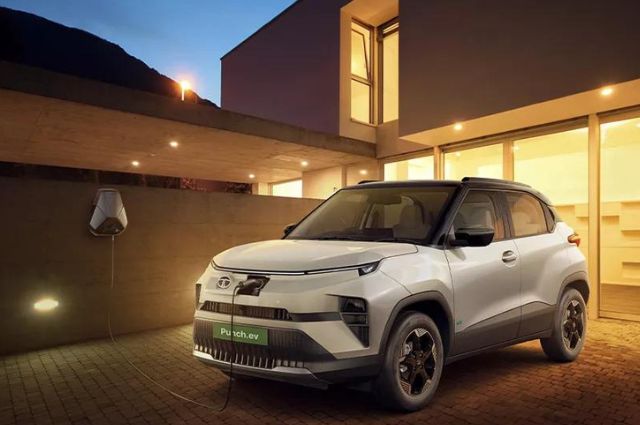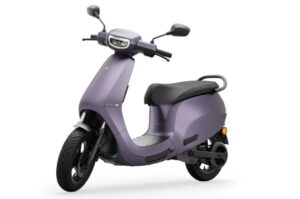
Tata Motors has made significant strides in the electric vehicle (EV) segment, with the Tata Punch EV emerging as one of the most anticipated models in India. Known for its robust design, advanced features, and competitive pricing, the Punch EV is poised to cater to the growing demand for sustainable mobility. One of the critical factors for any potential EV buyer is understanding the charging time, which plays a crucial role in daily usability and long-term satisfaction. This blog will explore the charging time specifics for the Tata Punch EV, helping you make an informed decision.
Tata Punch EV Charging Options
The Tata Punch EV, like most modern electric vehicles, offers multiple charging options to cater to different needs and scenarios. These typically include:
- AC Home Charging: This is the most common method where users can charge their Punch EV using a standard 15A plug point available at home.
- DC Fast Charging: For those needing a quicker charge, fast charging stations provide a significant advantage, reducing the time spent waiting for the vehicle to recharge.
AC Home Charging
Charging your Tata Punch EV at home is perhaps the most convenient option, especially for daily use. The vehicle can be plugged into a standard 15A socket, which is a common setup in Indian households.
- Charging Time: On average, using a standard 15A socket, the Tata Punch EV is expected to take around 8-12 hours to charge fully. This duration allows users to plug in their vehicle overnight and have a fully charged car ready by morning, which is ideal for daily commutes or short trips around the city.
- Charging Speed: The slower charging speed is due to the limited power output of standard home sockets, usually around 2-3 kW. While this might seem lengthy, it is perfectly suited for those who drive moderate distances daily and have the convenience of overnight charging.
DC Fast Charging: Speed Meets Efficiency
For those who require faster charging or are often on the move, DC fast charging stations are a game-changer. These stations are becoming increasingly common across major cities and highways, making long-distance travel in an EV more practical.
- Charging Time: Using a DC fast charger, the Tata Punch EV can reach up to 80% charge in just 50-60 minutes. This quick turnaround is perfect for long trips where stopping for a meal or coffee can coincide with charging the vehicle.
- Charging Speed: Fast chargers typically operate at much higher power levels, usually between 15-50 kW or more, significantly reducing the time required to charge the battery. This efficiency is one of the key factors driving the adoption of EVs for those who travel frequently or on longer routes.
Factors Affecting Charging Time
While the above-mentioned charging times are standard, several factors can influence the actual time it takes to charge your Tata Punch EV:
- Battery Capacity: The total capacity of the Punch EV’s battery pack plays a crucial role in determining the charging time. A larger battery will naturally take longer to charge, though it offers more extended range.
- State of Charge (SoC): The current charge level of the battery when you start charging (referred to as the State of Charge or SoC) impacts the time needed. Charging from 0% to 80% is typically faster than charging from 80% to 100% due to the way lithium-ion batteries manage energy intake.
- Charger Type and Availability: The type of charger you use and its availability also significantly affect charging time. Public charging stations, particularly fast chargers, are excellent for quick top-ups, while home chargers are better for regular, overnight charging.
- Environmental Factors: Temperature and weather conditions can influence the charging process. Extreme cold or heat can slow down charging as the battery management system works to maintain an optimal temperature for the battery cells.
Maximizing Efficiency: Tips for Optimal Charging
To get the most out of your Tata Punch EV’s charging capabilities, consider the following tips:
- Plan Your Charging Schedule: If possible, charge your vehicle during off-peak hours when electricity demand is lower. This not only helps in reducing costs but can also ensure your vehicle charges more efficiently.
- Utilize Fast Charging Sparingly: While fast charging is convenient, frequent use can stress the battery over time. It’s best to use fast chargers only when necessary, such as during long trips, and rely on slower home charging for daily needs.
- Monitor Battery Health: Regularly check your vehicle’s battery health and avoid letting the charge drop to extremely low levels frequently. Keeping the charge between 20% and 80% can help prolong battery life and maintain optimal performance.
Conclusion
The Tata Punch EV presents a balanced approach to electric mobility, offering both convenience and efficiency in its charging options. Whether you primarily use home charging for daily commutes or rely on fast charging for longer journeys, understanding the charging time dynamics of your EV is crucial for a seamless ownership experience. With the infrastructure for electric vehicles improving across India, the Tata Punch EV is well-positioned to meet the needs of urban drivers and long-distance travelers alike.
Also read: Tata Curvv Specifications – Dimensions, Configurations, Features, Engine cc






